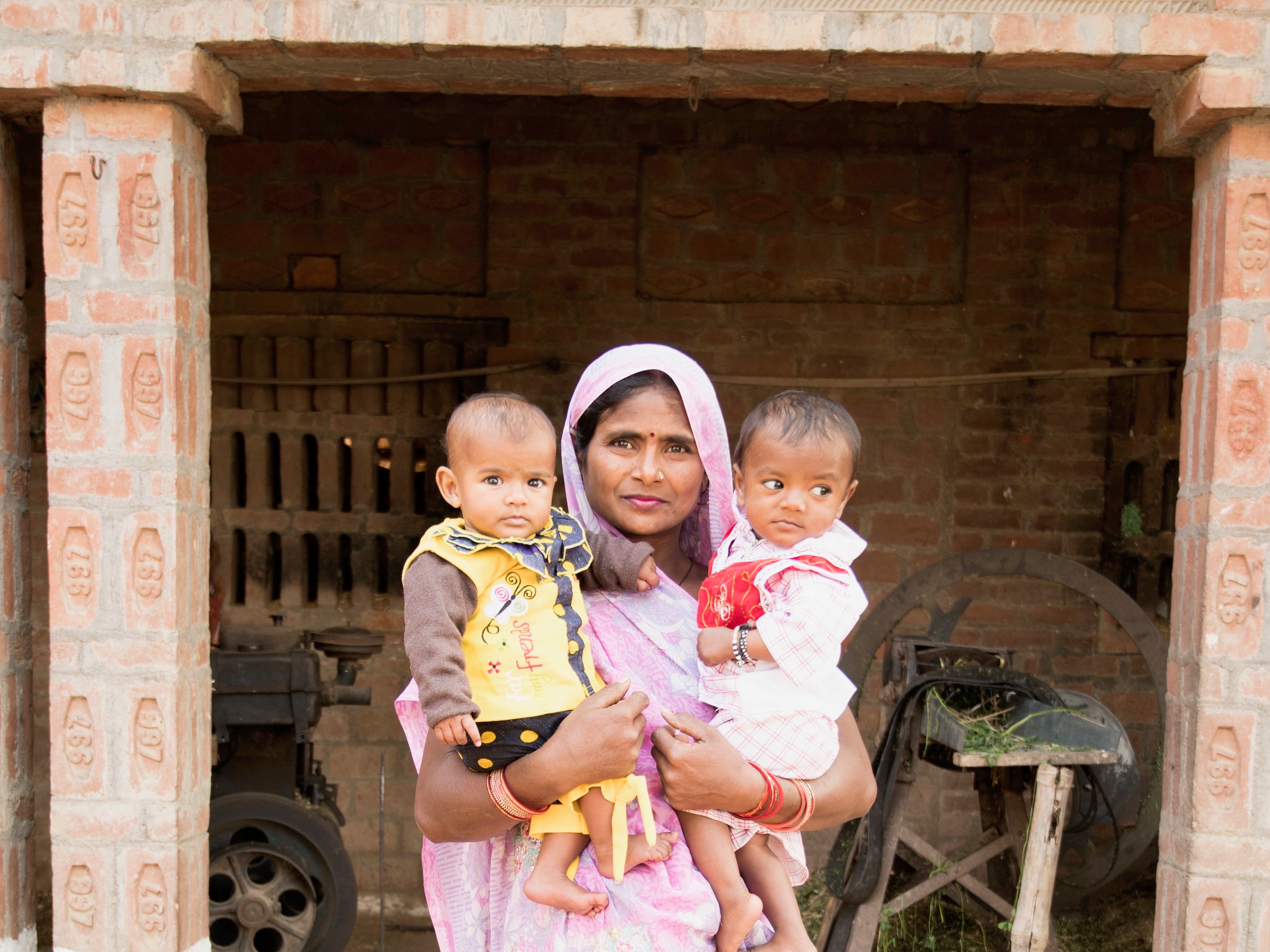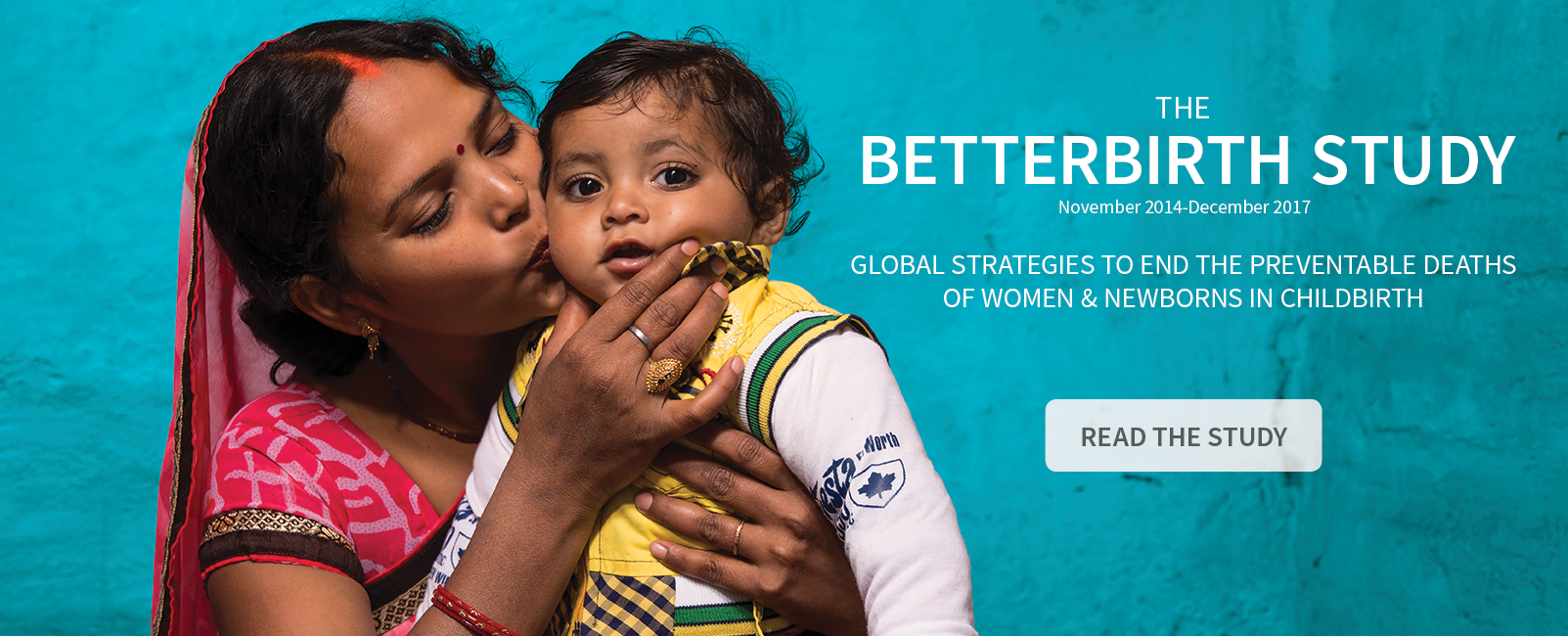Every day, more than 800 young women and 7,000 babies die around the time of childbirth worldwide, while thousands more suffer life-threatening and lifelong complications.
Globally, we have made great strides in lowering the deaths of women and newborns; however, there is substantial room for improvement as childbirth remains the No. 2 killer of women of childbearing age. Almost all of these deaths are in low-resource settings, and the vast majority are preventable.
Poor quality of childbirth care in health facilities has been recognized as a major contributor to maternal and neonatal deaths, remaining an unfinished challenge for global health. While no single intervention alone can address the problem, improving the quality of facility-based care during labor and delivery is a critical component.
Our work in BetterBirth is focused on improving facility-based care during the period of highest risk of death and complications for women and babies – the 48 hours around childbirth. The BetterBirth Program uses the World Health Organization’s (WHO) Safe Childbirth Checklist, a powerful tool that supports birth attendants to consistently deliver essential childbirth practices proven to address the biggest killers of women and babies, such as:
- handwashing and use of clean gloves to prevent infection,
- monitoring and treatment of women’s blood pressure to prevent eclampsia, and
- provision of uterine massage and appropriate medication to prevent maternal hemorrhage.
From 2014-2016, Ariadne Labs and its global partners led one of the largest studies ever conducted in maternal and newborn health to test the BetterBirth program in Uttar Pradesh, India. With more than 300,000 women and newborns, the BetterBirth Study is the first study to rigorously demonstrate large-scale, broad-based improvement in care during the 48-hour period of labor and delivery when women and newborns face the greatest risk of death and complications.
The BetterBirth Study
The BetterBirth study launched in 2014 in Uttar Pradesh, India, which has some of the country’s highest maternal and neonatal mortality rates. It is one of the largest studies ever conducted in maternal and newborn health, with more than 300,000 women and newborns. It is also the first study to rigorously demonstrate large-scale, broad-based improvement in care during the 48-hour period of labor and delivery when women and newborns face the greatest risk of death and complications.
Small studies have demonstrated that use of the WHO Safe Childbirth Checklist could improve birth practices. Whether a program that uses coaching to boost adoption of the Checklist could enable such improvement at large scale, and could thereby reduce death rates, was unknown.
In this two-year randomized study, birth attendants and managers at 60 rural health centers in Uttar Pradesh were coached on use of the WHO’s Safe Childbirth Checklist. Uttar Pradesh is India’s most populous state and has among the highest birth-related mortality rates in the country, making it strategically critical to India’s effort to reduce maternal and neonatal death. Sixty matched facilities that did not receive the intervention served as comparison sites. Coaches and independent observers recorded birth attendant performance, tracking obstacles and successes in implementing the Checklist. The birth attendance performance information was provided in real-time as supportive feedback to birth attendants, facility managers and district health officials to encourage problem solving, communication and teamwork. The intervention did not include skills training for birth attendants and did not provide supplies or medications.
The intervention achieved significant gains in the quality of care during labor and delivery, but the improvements were insufficient to reduce death rates. Specifically:
After two months of coaching, birth attendants completed 73 percent of the essential birth practices, 1.7 times better than the control arm at 42 percent. Among the findings:
- Proper administration of oxytocin immediately following childbirth to prevent maternal hemorrhage was 80 percent in intervention facilities vs. 21 percent in control facilities.
- Initiation of breastfeeding (70 percent in intervention facilities vs. 4 percent in control facilities) and skin-to-skin contact (79 percent in intervention facilities vs. 11 percent in control facilities) between mother and newborn to warm the baby was significantly higher in intervention facilities.
- Appropriate measurement of maternal blood pressure (68 percent in intervention sites vs. 7 percent in control sites) and measurement of maternal temperature (63 percent in intervention sites vs. 0.3 percent in control sites) and newborn temperature (43 percent intervention v. 0.1 percent control) was significantly higher in intervention sites compared to control sites.
At twelve months, four months after the coaching ended, completion of checklist items persisted at 62 percent, 1.4 times better than control facilities, which remained unchanged. There was no difference between intervention and control sites, however, in stillbirths, seven-day newborn mortality and seven-day maternal mortality and morbidity.
Explanations the authors cited for the lack of impact on death rates include persistent gaps in skills, supplies or systems for care of complications.
The results of the BetterBirth study are important to the public health community, showing that impressive behavior change and major improvements in the quality of facility-based childbirth are possible. At the same time, the results highlight the continued need to strengthen health systems and provide the missing links required for reductions in mortality. The agenda now is to bring together system improvements and identify the additional components required to save lives in childbirth.
Read more about the study and its results. Download the BetterBirth study fact sheet. Visit the BetterBirth Study website.
The Safe Childbirth Checklist
Inspired by the success of the WHO Surgical Safety Checklist, WHO launched an investigation in 2009 into whether a similar approach could be used to improve the quality of care during facility-based labor and delivery. A group of researchers at the Harvard T.H. Chan School of Public Health led by Ariadne Labs Executive Director Dr. Atul Gawande was engaged as lead technical partners in the process.
The work began with a comprehensive review of the available maternal and child health evidence and guidelines, followed by a two-day consultation meeting held at the WHO headquarters in Geneva in July 2009. More than 50 representatives from around the world attended, including frontline health workers and experts in maternal and child health, patient safety and checklist development. They synthesized the most important practices that should be provided to every mother and newborn in childbirth.
The 28-item Checklist addresses critical concerns during four stages of childbirth: admission, just before pushing, soon after birth and before discharge. It is specifically designed to target the main causes of death to women and babies in childbirth:
Major causes of maternal death:
- Hemorrhage
- Infection
- Obstructed labor
- Hypertensive disorders
Major causes of newborn death:
- Birth asphyxia
- Infection
- Complications related to prematurity
The Checklist was refined through ongoing discussions with a collaborator network, and field tested beginning in January 2010 in nine countries: Kenya, Tanzania, Ghana, Nigeria, Mali, India, China, Pakistan and Egypt.
The revised version was then piloted in Karnataka, India. The pilot included use of the Checklist, supportive, peer-to-peer coaching for birth attendants and performance feedback. Between July and December 2010, use of the Checklist by birth attendants in Karnataka resulted in an increase in the number of life-saving practices completed, from 34 percent of the Checklist items at baseline to 97 percent in the intervention.
Ariadne Labs support for the Safe Childbirth Checklist
To promote quality institutional delivery for mothers and newborns, Ariadne Labs actively supports global sites to successfully use the WHO Safe Childbirth Checklist. With the support of the Bill & Melinda Gates Foundation and the John D. and Catherine T. MacArthur Foundation, Ariadne Labs has provided training in numerous countries including Rwanda, Mexico and Indonesia.
Our implementation experts work to:
- Support the rollout of the WHO Safe Childbirth Checklist through coaching and implementation strategy to improve the quality of facility-based delivery.
- Synthesize vital lessons learned relating to scale-up of checklists and freely disseminate the information to programmers, policymakers and other key stakeholders.
- Foster a web-based learning platform to support exchange of best practices among a global community of childbirth quality champions. Join the BetterBirth Community of Practice.
Global use of the Safe Childbirth Checklist
The WHO Safe Childbirth Checklist is currently implemented and evaluated in more than 30 countries around the world, from Namibia to Mexico to Italy. Work is underway to identify methods for further improving implementation of the Checklist and to develop additional strategies to achieve reductions in death and suffering for mothers and newborns.The WHO Safe Childbirth Checklist Collaboration brought together health providers from around the world using the Checklist to share strategies and lessons learned. The Collaboration provided a platform for the learning and sharing of experiences, contributing to the broader work of achieving the UN’s Sustainable Development Goal 3: to reduce the global maternal mortality ratio to less than 70 per 100,000 live births by 2030.
The BetterBirth Program in Namibia
While the BetterBirth study was underway, a team of doctors, nurses, and administrators led by Dr. Leonard Kabongo at Gobabis District Hospital worked on their own implementation of the Safe Childbirth Checklist with a coaching package.During a 6-month period, the team observed an improvement in the average number of practices on the Checklist that were completed from 68 percent to 95 percent. They also found that the combined number of stillbirths and newborn deaths within the first week of life, known as perinatal mortality, dropped from 22 to 13.8 deaths per 1000 deliveries, due largely to a reduction in stillbirths. Read more about the work at Gobabis District Hospital.Read the published findings of the Namibia implementation.




